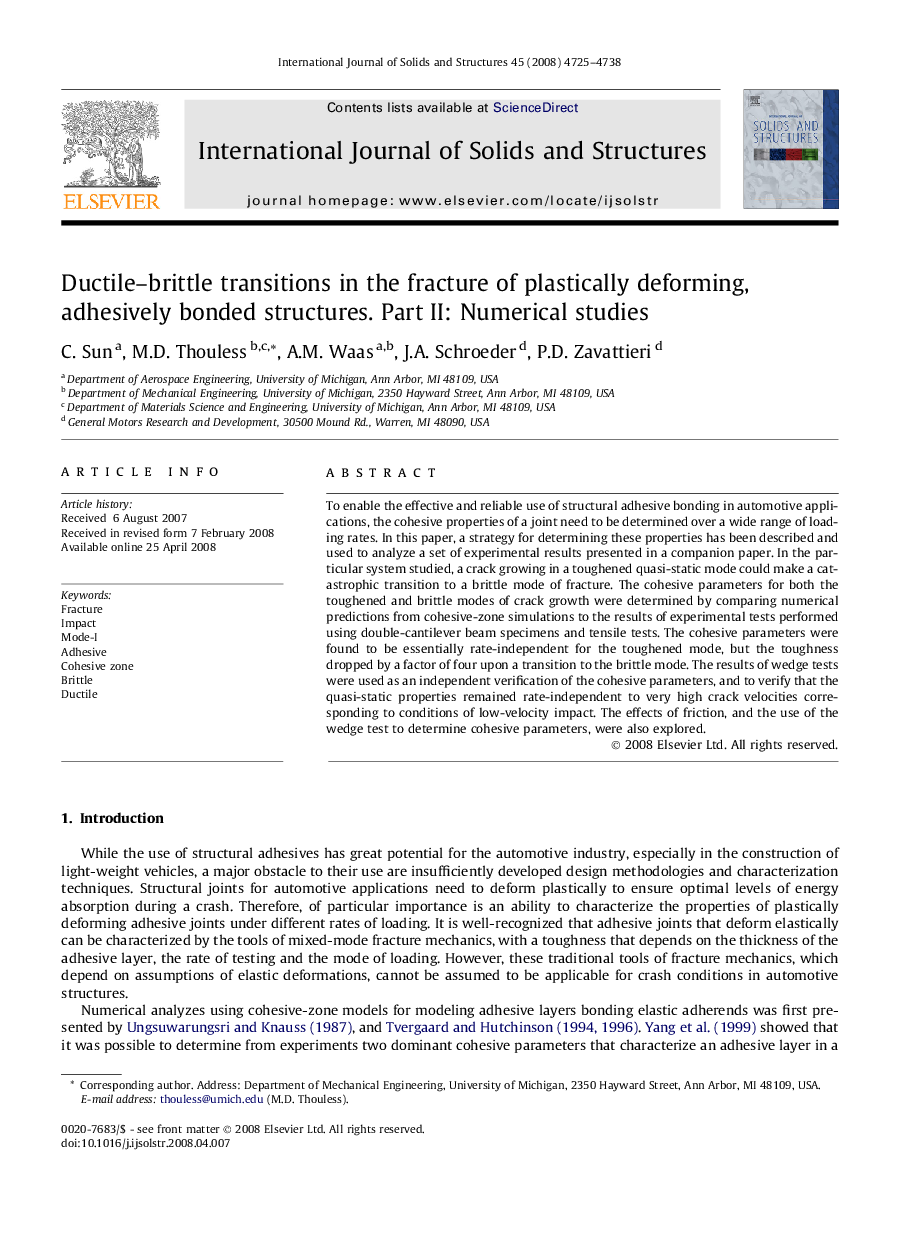| کد مقاله | کد نشریه | سال انتشار | مقاله انگلیسی | نسخه تمام متن |
|---|---|---|---|---|
| 279523 | 1430350 | 2008 | 14 صفحه PDF | دانلود رایگان |

To enable the effective and reliable use of structural adhesive bonding in automotive applications, the cohesive properties of a joint need to be determined over a wide range of loading rates. In this paper, a strategy for determining these properties has been described and used to analyze a set of experimental results presented in a companion paper. In the particular system studied, a crack growing in a toughened quasi-static mode could make a catastrophic transition to a brittle mode of fracture. The cohesive parameters for both the toughened and brittle modes of crack growth were determined by comparing numerical predictions from cohesive-zone simulations to the results of experimental tests performed using double-cantilever beam specimens and tensile tests. The cohesive parameters were found to be essentially rate-independent for the toughened mode, but the toughness dropped by a factor of four upon a transition to the brittle mode. The results of wedge tests were used as an independent verification of the cohesive parameters, and to verify that the quasi-static properties remained rate-independent to very high crack velocities corresponding to conditions of low-velocity impact. The effects of friction, and the use of the wedge test to determine cohesive parameters, were also explored.
Journal: International Journal of Solids and Structures - Volume 45, Issue 17, 15 August 2008, Pages 4725–4738